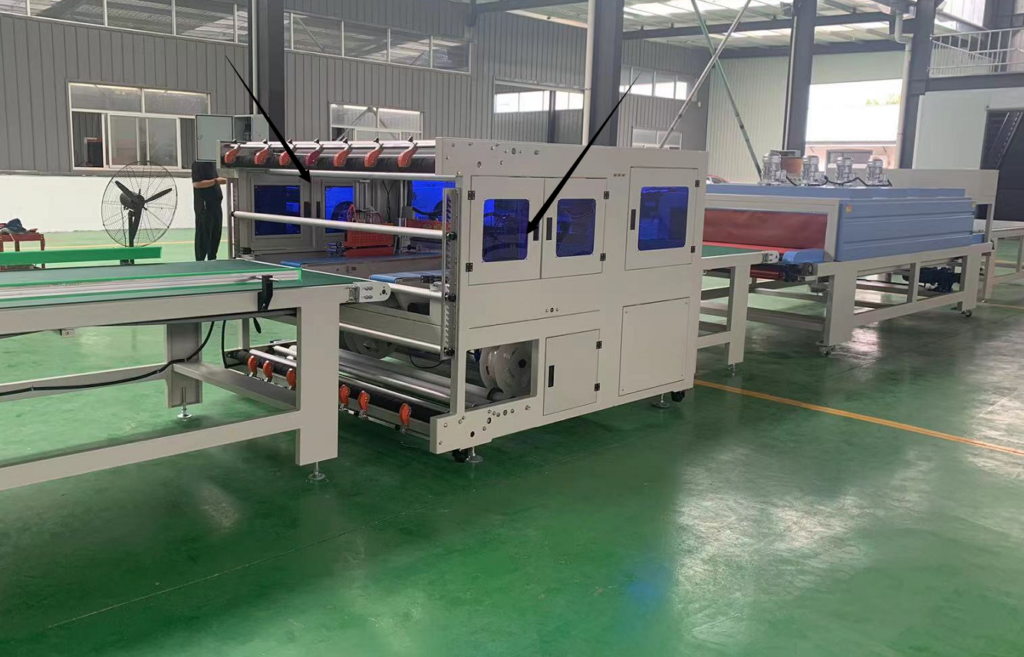Automated Door Packaging: A Closer Look at Shrink Wrapping Machines
Ensuring doors arrive at their destination—whether a distribution center, job site, or retail outlet—in pristine condition is paramount. Damage during transit or storage can lead to costly replacements and project delays. Automated packaging systems, particularly door shrink wrap machines, offer an efficient and reliable solution for protecting these essential building components.
Understanding the Shrink Wrapping Process for Doors
Shrink wrapping involves enveloping a door in a polymer plastic film. When heat is applied, the film shrinks tightly around the product, creating a secure, protective layer. This method is widely used in the door manufacturing and distribution industry for its effectiveness and automation potential.
Below is an example of a door shrink and packing machine in operation:
A typical automated door packaging machine designed for shrink wrapping integrates several key stages and components:
Key Components and Operational Flow
Infeed Conveyor System: Doors are loaded onto a conveyor belt system that transports them into the packaging station. The speed of these conveyors is often adjustable to match production line rates and accommodate different door sizes or weights. Guide rails and protective rollers help position the door correctly and prevent damage as it moves.
Film Application: The machine dispenses the appropriate size and type of shrink film (commonly Polyolefin (POF) or Polyethylene (PE)) around the door. Depending on the machine design (e.g., L-bar sealer, side sealer), the film may be sealed on multiple sides to fully encapsulate the door. Sensors detect the door's position to ensure accurate film placement and sealing.
Shrink Tunnel: After being wrapped in film, the door passes through a heat tunnel. Controlled hot air circulation within the tunnel causes the film to shrink uniformly, conforming tightly to the shape of the door. Precise temperature and airflow control are crucial for achieving a consistent, wrinkle-free finish without damaging the door or the film.
Cooling and Outfeed: Upon exiting the shrink tunnel, the wrapped door may pass through a cooling station to help the film set quickly. It then moves onto an outfeed conveyor for unloading or further handling (e.g., labeling, palletizing).

door shrinking machine with motion sealer4 Optional Protective Measures
While the shrink film itself provides significant protection against dust, moisture, and surface scratches, additional padding materials can be incorporated before the wrapping process for enhanced impact resistance:
- Bubble Wrap or Foam Sheets: Applied to door surfaces or edges to cushion against impacts.
- Corner Protectors: Placed on vulnerable corners before wrapping.
- Spacers: Used when stacking multiple doors to prevent contact.

economic type door shrink packing machin4 Benefits of Automated Door Shrink Wrapping
Implementing automated door shrinking machines offers several advantages over manual packaging methods:
- Increased Throughput: Automation significantly speeds up the packaging process compared to manual labor, boosting overall productivity and enabling faster order fulfillment.
- Enhanced Product Protection: The tight, conforming nature of shrink wrap, combined with precise machine handling, minimizes the risk of dents, scratches, and shifting during transit. The film provides a barrier against environmental factors like dust and moisture.
- Consistent Packaging Quality: Automated systems deliver standardized, repeatable results, ensuring every door is packaged to the same specification. This consistency meets shipping requirements and enhances the professional appearance of the product.
- Improved Worker Safety: Automating the handling and wrapping of often heavy and unwieldy doors reduces the manual effort required and eliminates operator exposure to potential hazards associated with lifting or using manual tools.
- Operational Cost Savings: While requiring an initial investment, automation can lead to lower long-term costs through reduced labor requirements, optimized material usage (film), and minimized product damage claims.
- Versatility: Many machines can be adjusted to accommodate various door dimensions (height, width, thickness) and types with minimal downtime for changeovers, offering flexibility for diverse product lines.
- Ease of Operation: Modern systems are designed for relatively straightforward operation and integration into existing production lines, often featuring user-friendly controls and diagnostics.
In summary, automated door shrink wrapping machines provide an efficient, reliable, and protective packaging solution vital for manufacturers and distributors. By increasing speed, ensuring consistency, improving safety, and safeguarding the product, these systems contribute significantly to operational efficiency and customer satisfaction.
